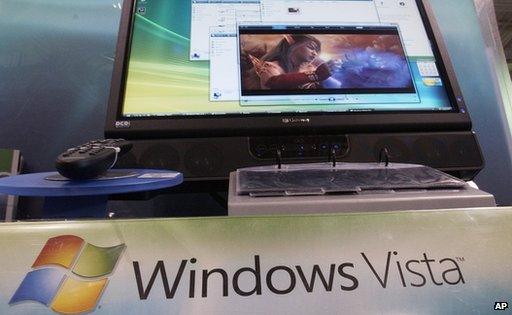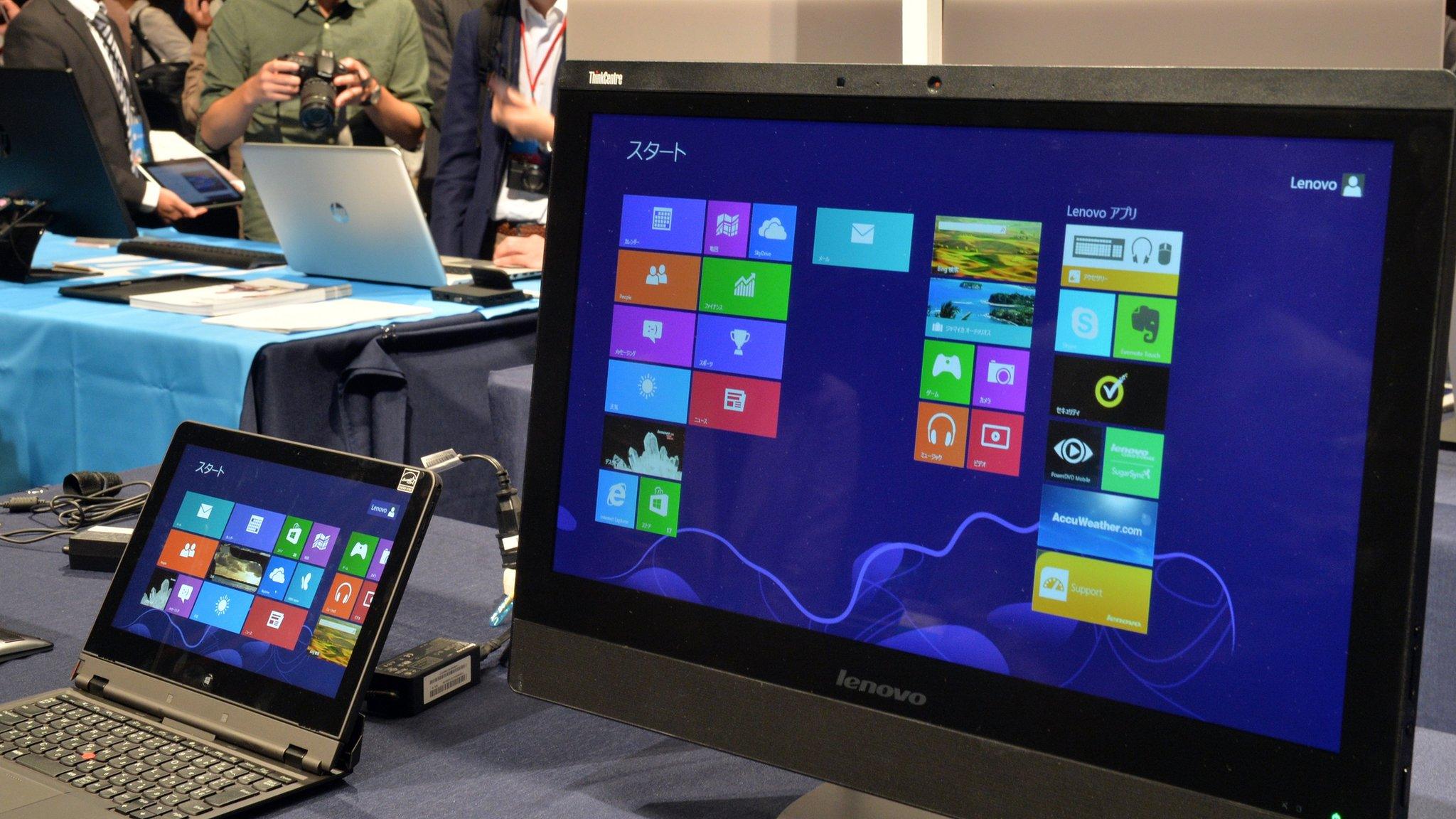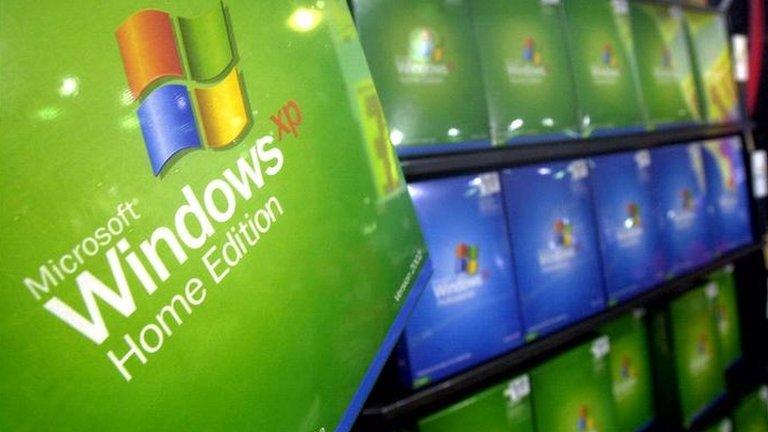Windows XP upgrade proves tricky business for John Lewis
- Published

Getting rid of Windows XP was a three-year journey for Waitrose owner John Lewis
How did your Windows XP upgrade go?
The need to replace the operating system (OS) became urgent in April when Microsoft officially stopped supporting the venerable workhorse.
No more support means no more bug fixes or security patches - a situation that makes it much more vulnerable to attack by cyber thieves.
My XP end-of-life experience was great. I carried out a "forklift upgrade" - tech slang for a major overhaul - and replaced the old machine with a new one running Windows 7.
Easy. Much more straightforward than the massive task many big companies faced.
"The scope of our project was 26,000 devices, both desktops and laptops, that needed to be upgraded to Windows 7," says Paul Miles, a project manager in John Lewis Partnership's IT department.
Those 26,000 machines are found in Waitrose supermarkets, John Lewis department stores and the company's head office.
Planning for the multi-million pound project began in 2011, says Mr Miles, but the big switch really got going in early 2013.
In the early days there was talk of putting it off completely and just paying Microsoft to keep offering bespoke support, he says.
Some big XP users have made this choice but it is not cheap. For just one year of extended support, the UK government is paying £5.5m. With Microsoft saying support prices will increase, keeping XP going could get very expensive.
"No-one thought that would be good value for money," Mr Miles says, especially as that put off the problem rather than solved it.
User control
The next step for the John Lewis Partnership involved cataloguing all the apps sitting on those ageing XP boxes.
"We had 800 separate applications we were running on XP," he says. "There was a lot of activity at the beginning to see which ones will work, and which ones will not work and will never work and need to be upgraded."
Dealing with the applications is the hard part of any upgrade, says Nik Simpson, a research vice-president at consultancy Gartner.
"Updating an operating system is relatively painless. Updating all the applications that run on top of it is something else entirely."

Upgrades were made harder because Vista limits what data can be saved where
What makes moving applications harder in XP, he says, is a series of changes that Microsoft introduced in its successor, Vista, that affect what a program can do.
Vista ushered in a security technology, known as User Account Control (UAC), which limits what your account on a machine can do to that device.
On XP, said Mr Simpson, there was no such compartmentalisation.
"UAC broke some old applications because those old programs assumed they could write anywhere on any user directory," he says.
In addition, says Garry Owen from virtual machine developer VMWare, many of those older applications hooked into proprietary features in the browser, IE6, that came with XP.
Remove either end of that code chain, he says, and there will be problems that an XP upgrade has to deal with.
By contrast, upgrading today is easier because the IT world no longer revolves around Microsoft Windows. Figures gathered by VMWare suggest that fewer than 50% of all business apps are written for Windows alone.
"Most applications now are not written for an operating system, they are written for a browser," he says.
Another challenge of an OS upgrade is that all that corporate software that was written in-house somehow has to be transferred to the new computers.
"Very often companies have these black box applications [software that carries out a function without revealing the process responsible] that just work but nobody knows how," he says.
"The perception is that companies cannot take the risk of them stopping working because if they do the business stops, too."
Party time
At the John Lewis Partnership, about 90% of its applications ran on Windows 7. But that still left a good chunk - 80 programs in all - that needed work.
"A lot of those, we had to completely re-write," says Mr Miles, "because they were our most important systems."

Switching from XP can be tricky if firms have written lots of software in-house
"In the end, some applications we had to keep on XP because there is no alternative," he says. "We have had to implement additional security to make sure they stay safe."
It was at this point that the scale of the task began to tell, he recalls. What seemed like a straightforward project had grown to involve complicated software and hardware audits, had disrupted several software development projects for key systems, and was going to demand some careful scheduling to get everything done on time.
"It was an enormous exercise," he says.
The final part involved replacing 60% of those 26,000 desktops, installing the new machines, training the staff how to use the new applications, and making all the printers work.
Despite all this, the retail group did hit the deadline and got everything done before the 8 April cut-off.
"It's been difficult but we have got some good things out of it," he says. "There are all sorts of knock-on effects to this that are not apparent when we kicked this off."
According to Mr Miles those "good things" include:
happier staff, who enjoy the more up-to-date software and faster machines
the chance to jettison old, redundant applications
a much better idea of what is sitting on the computers of its employees
updated and more robust recovery and back-up plans.
Once everything was done, IT staff at JLP involved in the project had "several celebrations", he says.
"They were quite low key, and to me that was a good sign because it meant that the deployment had gone well."
- Published20 May 2014

- Published2 May 2014

- Published8 April 2014

- Published5 March 2014
